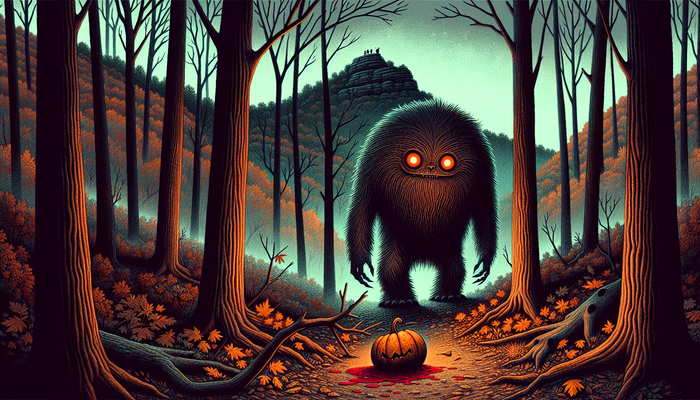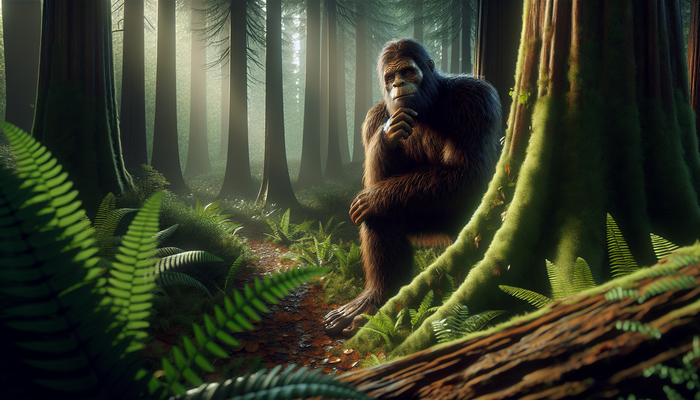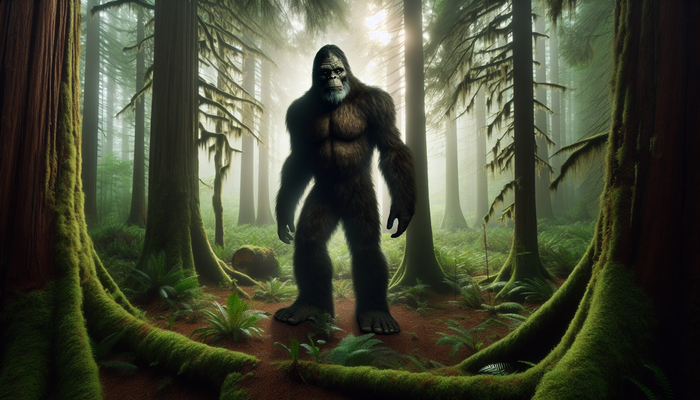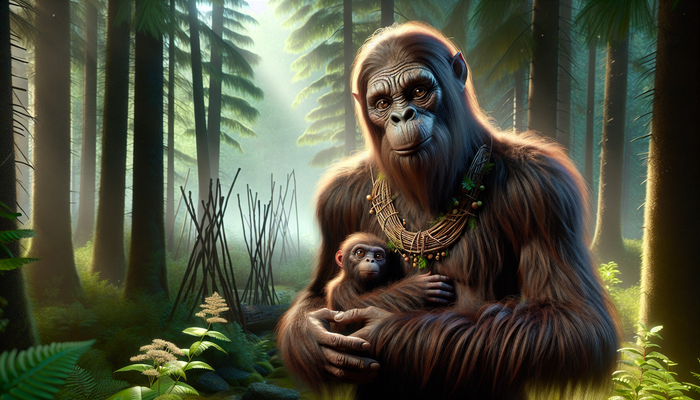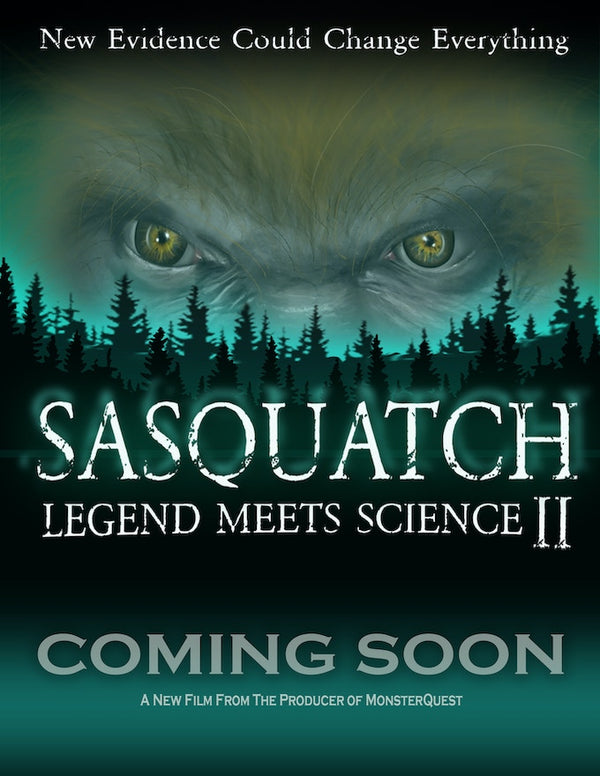The Montauk Monster: The Baffling Beach Beast
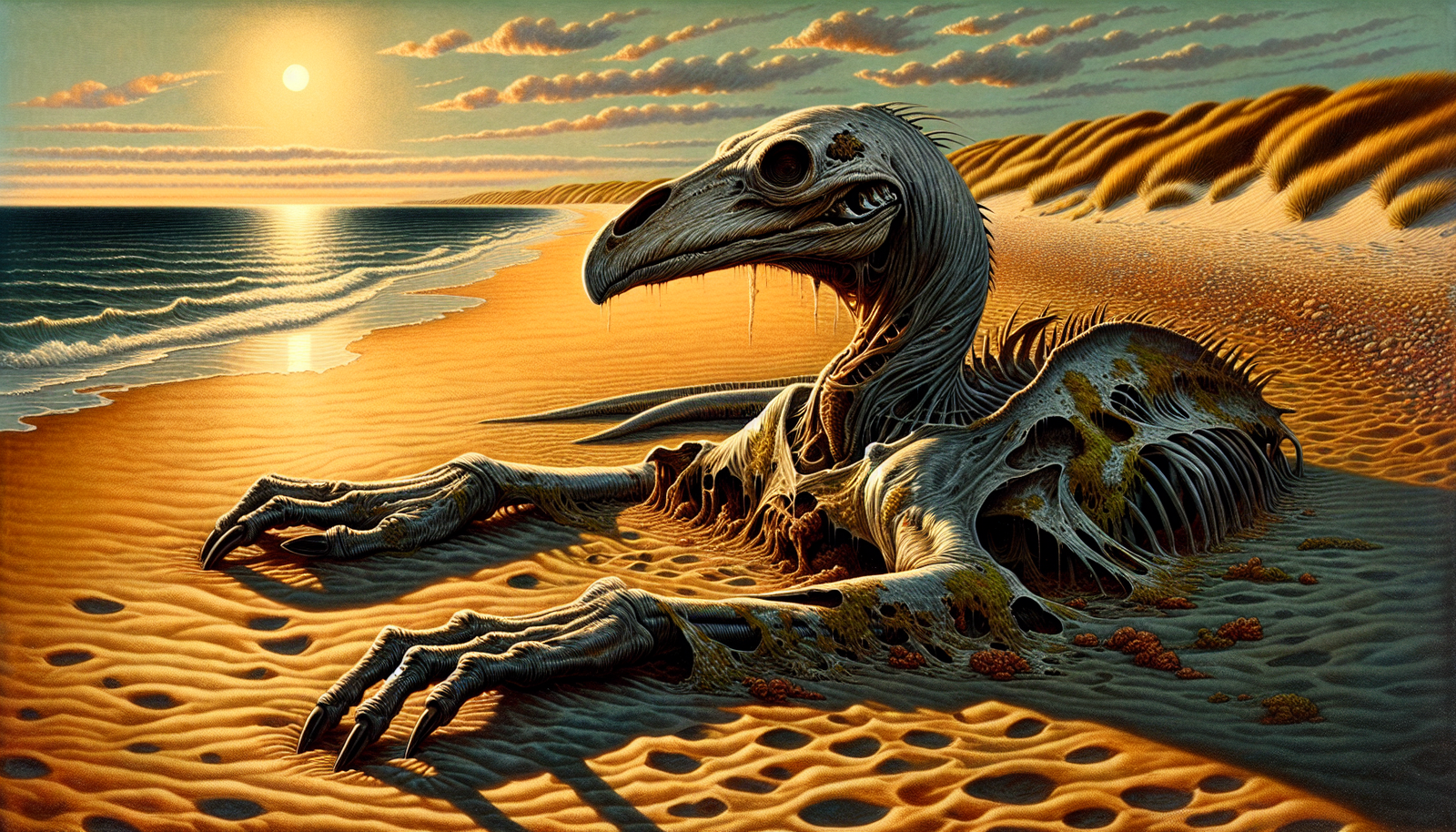
By Oliver Bennett, Bigfoot Researcher and Teacher
In the annals of cryptozoology, few tales have captured the public's imagination quite like the saga of the Montauk Monster. This strange, misshapen creature, which washed ashore on a Long Island beach in the summer of 2008, quickly became an internet sensation, sparking wild theories, heated debates, and enduring fascination. As a researcher with a keen interest in the intersection of science, folklore, and the unexplained, I've long been intrigued by this baffling case. What was this creature? Where did it come from? And what does its story tell us about our relationship with the unknown in the digital age? Join me as we delve into the mystery of the Montauk Monster and attempt to unravel the tangled threads of fact, speculation, and myth that surround this peculiar beast.
The Fateful Discovery
Our story begins on a warm July day in 2008, on the sun-drenched sands of Ditch Plains Beach in Montauk, New York. Jenna Hewitt, Rachel Goldberg, and Courtney Fruin, three friends out for a stroll, stumbled upon a sight that would soon captivate the world: the carcass of a strange, unidentifiable creature, lying in a crumpled heap at the water's edge.
Hewitt, thinking quickly, snapped a photo of the beast with her camera. Little did she know that this single image would soon rocket around the globe, igniting a firestorm of speculation and turning this quiet beach into the epicenter of an international media frenzy.
A Monstrous Visage
So what exactly did Hewitt and her friends find that fateful day? Descriptions of the creature paint a picture of a true monstrosity. About the size of a small dog, the carcass was completely hairless, its mottled, leathery skin stretched taut over a bloated frame. The face was perhaps the most unsettling feature, with a long, beak-like snout that earned it comparisons to everything from a bird to a dinosaur. Sharp teeth protruded from the lower jaw, adding to the creature's menacing appearance. The body terminated in long, slender fingers or claws, a far cry from the paws of any known animal.
It was clear that this was no ordinary beast. But what was it? As photos of the carcass began to circulate online, the question on everyone's lips was: had a genuine monster washed ashore in Montauk?
A Media Sensation
The story of the strange carcass first broke in the local press, with The Independent, an East Hampton newspaper, running a piece on July 23 under the tongue-in-cheek headline "The Hound of Bonacville." The article included Hewitt's now-infamous photo and offered some lighthearted speculation about the creature's origins, suggesting it could be anything from a discarded pet to a wayward sea turtle to a mutant escapee from the nearby Plum Island Animal Disease Center.
But it was when the story was picked up by Gawker.com, a popular news and gossip site, that things really exploded. Under the sensational headline "Dead Monster Washes Ashore in Montauk," Gawker's piece thrust the creature into the national spotlight. Soon, major media outlets like CNN and Fox News were running with the story, and the "Montauk Monster," as it came to be known, was a bona fide viral sensation.
Theories and Speculation Run Wild
As images of the creature spread across the internet like wildfire, speculation about its identity reached a fever pitch. Web sleuths and amateur cryptozoologists put forward a dizzying array of theories, ranging from the plausible to the downright bizarre.
One popular idea was that the creature was some sort of turtle that had lost its shell. Proponents pointed to the leathery skin and beaked face as evidence. However, this theory was quickly debunked by experts, who noted that a turtle's shell is fused to its spine and cannot be shed like a coat.
Others suggested that the beast might be a diseased or deformed dog or coyote, ravaged by illness or the elements until it was unrecognizable. Some even speculated that it could be a rare species of rodent or a sheep, despite the clear differences in dentition and overall morphology.
But perhaps the most intriguing and persistent theory was that the Montauk Monster was a mutant or hybrid creature that had escaped from the Plum Island Animal Disease Center, a secretive government facility located just off the coast of Long Island. For decades, Plum Island had been the subject of dark rumors and conspiracy theories, with whispers of biological weapons, genetic experiments, and terrifying creatures stalking its halls. Could the Montauk Monster be the product of some twisted experiment gone wrong?
The Plum Island Connection
The idea that the Montauk Monster might be linked to Plum Island was catnip for conspiracy theorists and lovers of the paranormal. After all, the facility had a long and murky history that seemed ripe for sinister speculation.
Established in 1954, the Plum Island Animal Disease Center was originally intended as a research facility for the study of foot-and-mouth disease and other animal pathogens. However, persistent rumors suggested that the island was also home to far more nefarious activities, including the development of biological weapons and the engineering of hybrid creatures through genetic manipulation.
These rumors were only fueled by the tight security surrounding the island, with armed guards, barbed wire fences, and strict prohibitions on unauthorized visitors. Some even claimed that the island was connected to the infamous Montauk Project, a supposed series of secret government experiments involving time travel, mind control, and contact with alien beings.
In this context, it's easy to see how the Montauk Monster could be woven into the tapestry of conspiracy and intrigue surrounding Plum Island. For many, the creature's bizarre appearance and mysterious origins seemed to point to something far more sinister than a simple animal carcass. The fact that it washed ashore just miles from the facility only added fuel to the conspiratorial fire.
The Case of the Missing Corpse
As the media frenzy around the Montauk Monster reached a fever pitch, something strange happened: the creature's carcass vanished without a trace. According to Hewitt, the last person to see the body was a local man who claimed to have taken it to the woods behind his house. But when reporters and curiosity-seekers tried to track down the elusive carcass, they found themselves stymied at every turn.
Rumors swirled that the body had been spirited away by government agents, eager to cover up evidence of their nefarious experiments. Others suggested that it had simply decomposed into nothingness, or been carried off by scavengers. Some even whispered that it had never existed at all, and that the whole affair had been an elaborate hoax or publicity stunt.
The disappearance of the carcass only deepened the mystery surrounding the Montauk Monster. With no body to examine, no DNA to test, and no concrete evidence to analyze, the creature seemed destined to remain a tantalizing enigma, forever lurking in the shadows of speculation and myth.
Expert Analysis and Consensus
Despite the wild theories and rampant speculation, there were some who approached the mystery of the Montauk Monster with a more sober and scientific eye. Foremost among these was Darren Naish, a British paleozoologist and science writer who has made a career out of studying mysterious and controversial creatures.
Naish carefully examined the available photographic evidence and came to a startling conclusion: the Montauk Monster was very likely nothing more than a waterlogged raccoon carcass. He pointed out that the "beak" that had so captivated observers was likely the animal's defleshed snout, the bony premaxilla exposed by the ravages of decomposition. The "claws" were consistent with a raccoon's dexterous fingers, and the overall body proportions matched those of a bloated, partially decayed procyonid.
Other experts, like Jeff Corwin, a well-known naturalist and television host, echoed Naish's assessment. The consensus among those who studied the case was that the Montauk Monster was no monster at all, but rather a sad, bedraggled victim of the natural process of decay, its monstrous appearance the result of the strange and often surprising ways in which bodies break down after death.
Of course, for many, this prosaic explanation was a bit of a letdown. After all, the idea of a genuine monster washing ashore, a creature that defied scientific classification and hinted at the vast unknowns lurking in the depths, was far more exciting than a waterlogged raccoon. But such is often the way with mysteries - the truth, once revealed, has a way of being a bit less fantastic than we might have hoped.
The Enduring Legacy of a Monster
And yet, despite the scientific consensus, the legend of the Montauk Monster lives on. In the years since that fateful summer day in 2008, the creature has taken on a life of its own, becoming a fixture of internet lore and a touchstone for those fascinated by the unexplained.
The Montauk Monster has been featured in countless news articles, television specials, and online videos. It has inspired art, literature, and even a low-budget horror film. Its likeness has graced t-shirts, coffee mugs, and all manner of other merchandise. In short, it has become a true cultural phenomenon, a modern-day mythical beast for the digital age.
But why? What is it about this strange, misshapen carcass that continues to capture the public's imagination, even years after its discovery?
Perhaps it has something to do with our enduring fascination with the unknown, with the idea that there are still mysteries waiting to be uncovered in the world around us. In an age where it sometimes feels like every inch of the planet has been mapped, catalogued, and explained, the Montauk Monster represents a tantalizing glimpse of something that defies easy categorization, a reminder that there are still wonders and horrors lurking in the shadows.
Or maybe it's the way the story of the Montauk Monster intersects with our deepest fears and conspiracies, tapping into the dark undercurrents of government secrecy, genetic experimentation, and the unintended consequences of human meddling with nature. The idea that something like the Montauk Monster could be the product of our own hubris and folly is a powerful and terrifying one, a cautionary tale for an age of rapid technological advancement and unchecked scientific ambition.
Or perhaps, in the end, it's simply the power of a good story, well told. The tale of the Montauk Monster has all the elements of a classic mystery - a strange discovery, a baffling creature, a web of intrigue and conspiracy, and an ultimate disappearance that leaves the door open for endless speculation and interpretation. It's the kind of story that lodges in the imagination and refuses to let go, a modern-day myth that speaks to something deep and primal within us.
Final Thoughts
And so, the mystery of the Montauk Monster remains unsolved, at least in the minds of many. Despite the scientific consensus that it was likely nothing more than a decomposed raccoon, the legend persists, fueled by the endless churn of the internet and the undying human appetite for the unexplained.
As a researcher, I find myself torn between the desire for a tidy, rational explanation and the allure of the unknown. While I believe that science and reason are our best tools for navigating the world, I also recognize the power and importance of mystery, of those blank spaces on the map that keep us wondering and imagining and striving to understand.
In the end, perhaps it doesn't matter so much what the Montauk Monster really was. Whether a mutant, a monster, or a humble raccoon, its true significance lies in the way it has captured our collective imagination, becoming a symbol of the strange, the uncanny, and the enduringly mysterious. It reminds us that, even in an age of satellites and smartphones, there are still wonders and horrors waiting to be discovered, if only we have the courage to look.
And so, the story of the Montauk Monster endures, a testament to the power of mystery in a world that sometimes feels all too explainable. It lurks in the shadows of our consciousness, a reminder that, no matter how much we think we know, there will always be something out there that defies our understanding, something that keeps us searching, wondering, and imagining, forever chasing after the unknown.
From Bigfoot to UFOs: Hangar 1 Publishing Has You Covered!
Explore Untold Stories: Venture into the world of UFOs, cryptids, Bigfoot, and beyond. Every story is a journey into the extraordinary.
Immersive Book Technology: Experience real videos, sights, and sounds within our books. Its not just reading; its an adventure.



